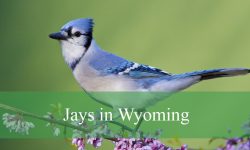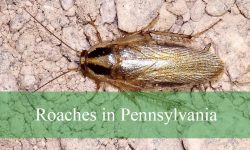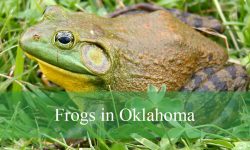Montana is home to an impressive variety of woodpeckers, each with unique traits, behaviors, and habitats. From the tiny Downy Woodpecker to the striking Pileated Woodpecker, these birds can be found across forests, grasslands, and even backyards throughout the state.
In this guide, we’ll explore 11 types of woodpeckers in Montana, complete with pictures and identification tips. You’ll learn how to recognize each species by size, markings, and habits, making it easier to spot and appreciate these fascinating birds in the wild.
Types of Woodpeckers Found in Montana
Downy Woodpecker
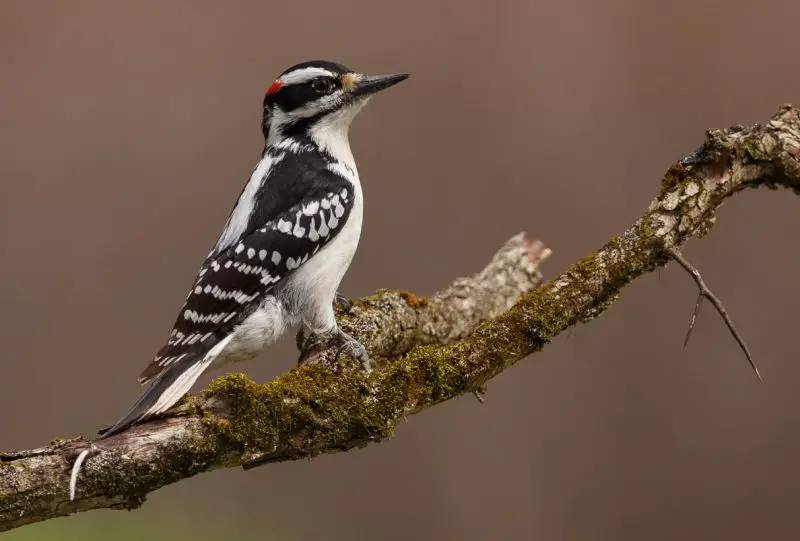
The Downy Woodpecker is the smallest woodpecker found in Montana, easily recognized by its petite size and delicate appearance. Adults typically measure about 5.5 to 6.7 inches in length with a wingspan ranging from 9.8 to 11.8 inches. They have striking black-and-white plumage, with white underparts, black wings marked with white spots, and a white stripe down the back. Males can be distinguished by a small red patch on the back of the head, while females lack this feature.
These woodpeckers are frequent visitors to forests, parks, and even backyard feeders across Montana. They are highly adaptable, occupying deciduous woodlands, mixed forests, orchards, and suburban areas. Their ability to thrive in diverse habitats makes them one of the most widespread woodpeckers in the region. They are often seen clinging to thin branches or cattail stems, a behavior less common in larger woodpecker species.
Downy Woodpeckers feed on insects, particularly beetle larvae, ants, and caterpillars. They also consume seeds, berries, and suet from feeders, especially during winter when insect availability decreases. Their foraging method involves tapping and probing into bark, but unlike larger woodpeckers, they often prefer smaller branches and weed stems. This feeding strategy allows them to exploit food resources that bigger woodpeckers cannot reach.
Breeding season occurs in spring, when pairs excavate nest cavities in dead trees or branches. The female typically lays four to five white eggs, which both parents incubate for about 12 days. After hatching, the chicks remain in the nest for around three weeks before fledging. A fun fact is that despite their tiny size, Downy Woodpeckers have a surprisingly loud drumming sound, often mistaken for larger species.
Hairy Woodpecker
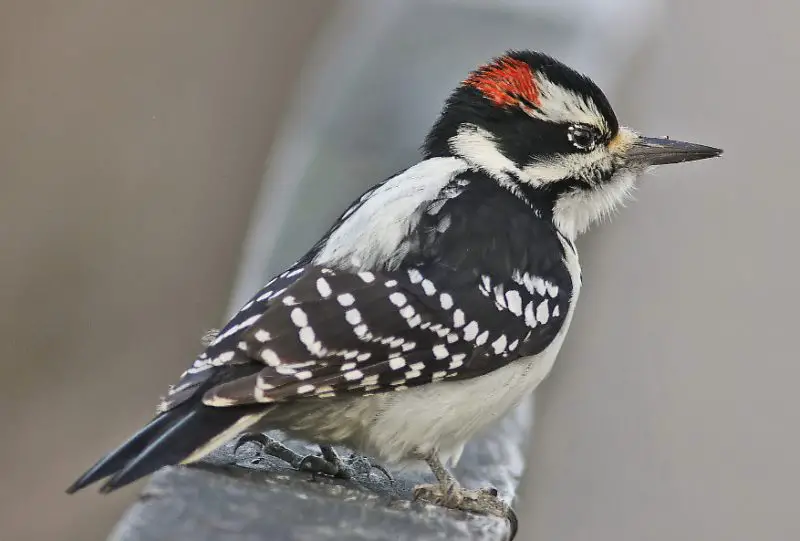
The Hairy Woodpecker is a medium-sized species commonly found in Montana’s forests. Measuring about 7.1 to 10.2 inches long with a wingspan between 13 to 16 inches, it is noticeably larger than the Downy Woodpecker. At first glance, Hairy and Downy Woodpeckers look almost identical with their black-and-white plumage, but the Hairy Woodpecker has a longer, more robust bill, which is nearly the length of its head. Males also feature a small red patch on the back of the head.
These birds inhabit mature forests, woodlands, and riparian areas, often preferring larger trees for foraging and nesting. In Montana, they are found in coniferous forests, cottonwood groves, and even in wooded residential areas. Unlike the smaller Downy, Hairy Woodpeckers tend to forage on tree trunks and larger branches, using their strong bills to hammer into bark and access deep wood-boring insects.
Their diet primarily consists of insects such as beetles, ants, and caterpillars, but they will also consume seeds, fruits, and suet when available. By foraging on larger trees, Hairy Woodpeckers help control populations of wood-boring pests, playing an important role in maintaining forest health. They are often heard before they are seen, thanks to their sharp, whinnying call and strong drumming sounds that echo through the woods.
During breeding season, pairs work together to excavate nest cavities in dead or decaying trees. Females usually lay four eggs, and both parents share incubation duties. The chicks fledge about a month after hatching. A fun fact is that Hairy Woodpeckers have been known to follow the feeding sounds of Pileated Woodpeckers, taking advantage of the larger bird’s excavations to find exposed insects.
Northern Flicker
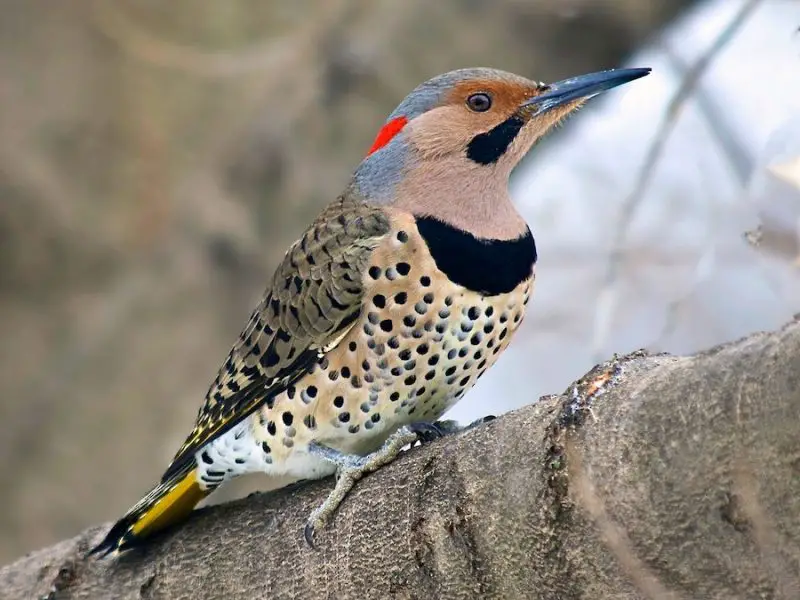
The Northern Flicker is one of Montana’s most striking and unique woodpeckers, notable for its unusual habits and colorful appearance. Measuring 11 to 14 inches long with a wingspan of 16.5 to 20 inches, it is among the larger woodpeckers in the state. Unlike most woodpeckers, flickers are often seen on the ground rather than clinging to tree trunks. Their plumage is a mix of brown, black, and gray with bold black spots on the belly and a distinctive black crescent on the chest. In Montana, the “Yellow-shafted” form is common, showing yellow underwings and tail feathers.
Northern Flickers thrive in open woodlands, forest edges, and grasslands dotted with trees. They are also commonly spotted in suburban areas, where they forage on lawns and fields. Unlike most woodpeckers that drill for insects in trees, flickers spend a significant amount of time probing the ground for ants and beetles, which make up the majority of their diet. This ground-feeding behavior sets them apart from other woodpeckers in Montana.
Their vocalizations are distinctive, including a loud “wick-a-wick-a-wick” call that echoes across open spaces. Northern Flickers are also known for their drumming behavior, often choosing metal surfaces such as gutters or chimney caps to produce louder sounds. This is typically done during the breeding season to attract mates or defend territories.
Breeding pairs excavate nest cavities in trees or occasionally in posts, where females lay between six to eight eggs. Both parents share incubation and feeding duties. A fun fact about Northern Flickers is that they are highly migratory compared to most woodpeckers, with many individuals moving south for the winter, although some remain in Montana year-round if food supplies are sufficient.
Pileated Woodpecker
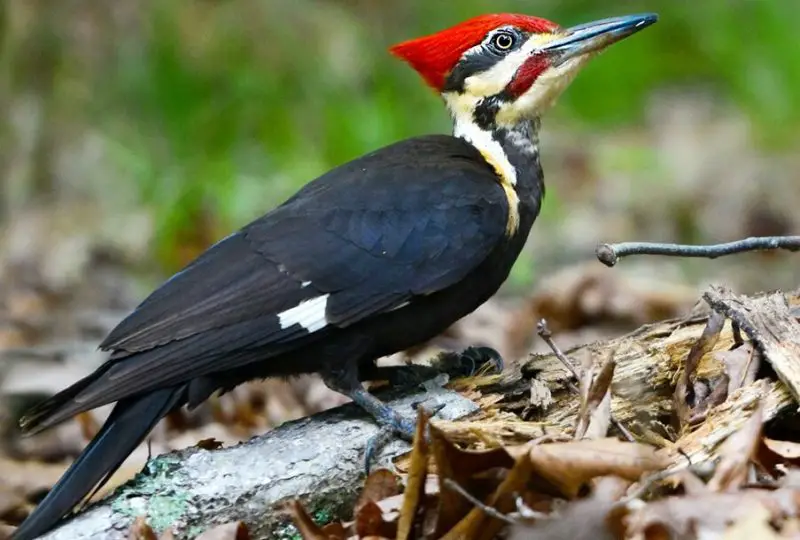
The Pileated Woodpecker is the largest woodpecker species in Montana, instantly recognizable by its impressive size and striking red crest. Adults measure between 16 to 19 inches in length with a wingspan of 26 to 30 inches, making them nearly the size of a crow. Their black body, bold white wing patches, and flaming red crest make them one of the most dramatic birds of the forest. Males can be distinguished from females by a red stripe extending along the cheek.
These woodpeckers are primarily found in mature forests with large trees, often preferring dense coniferous stands or mixed hardwood forests. In Montana, they are most frequently seen in remote wooded areas, although they occasionally visit rural properties with abundant trees. Their loud, resonant drumming and high-pitched “cuk-cuk-cuk” calls carry long distances through the forest.
Pileated Woodpeckers feed primarily on carpenter ants and wood-boring beetle larvae, which they access by chiseling large rectangular holes into dead or decaying trees. These excavations can be quite extensive and provide shelter for other animals, including owls, bats, and small mammals, once abandoned. They also eat fruits and nuts, particularly in late summer and fall.
Breeding occurs in spring, with pairs working together to create nest cavities in dead trees. Females lay three to five eggs, and both parents share incubation and chick-rearing responsibilities. A fascinating fact is that the cartoon character Woody Woodpecker was inspired by the Pileated Woodpecker, thanks to its striking appearance and raucous calls.
Lewis’s Woodpecker
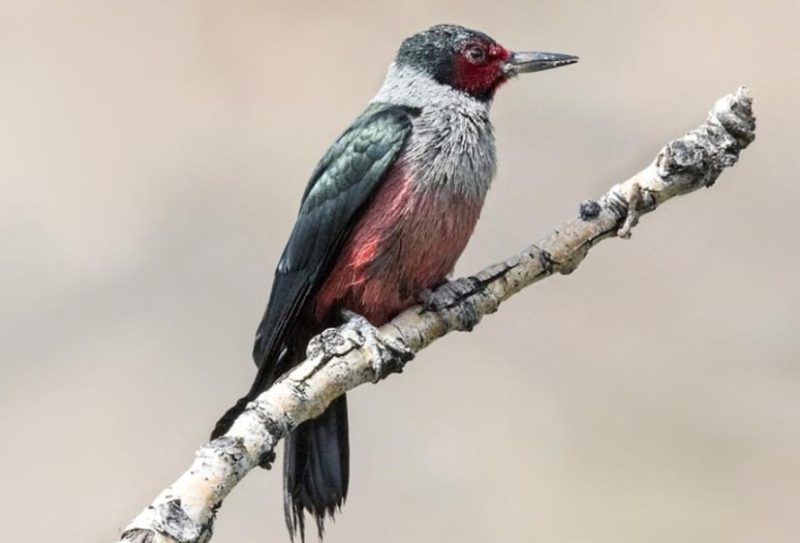
Lewis’s Woodpecker is a distinctive and unusual woodpecker species that stands out in Montana with its unique coloration and behavior. Measuring 10 to 11 inches long with a wingspan of 19 to 20 inches, it differs from the typical black-and-white woodpecker pattern. Instead, it displays a dark greenish-black back, a pinkish belly, gray collar, and a deep red face. This striking combination makes it one of the most colorful woodpeckers in North America.
In Montana, Lewis’s Woodpeckers inhabit open pine forests, burned woodlands, and cottonwood groves along rivers. They prefer areas with scattered large trees, where they can forage and nest. Unlike most woodpeckers that cling to trunks, Lewis’s Woodpeckers often perch upright on branches, resembling crows in posture. They are also skilled fliers, frequently catching insects in mid-air, a rare behavior among woodpeckers.
Their diet includes flying insects, fruits, nuts, and berries. During summer, they rely heavily on aerial insects, while in fall they switch to storing acorns and other nuts in tree crevices for winter use. This caching behavior ensures they have food supplies during colder months. They are often seen foraging in flocks during migration, which is unusual for most solitary woodpecker species.
Breeding season takes place in spring, when pairs excavate nest cavities in dead trees or use old nests from other species. Females typically lay five to nine eggs, and both parents share incubation duties. A fun fact about Lewis’s Woodpecker is that it was named after Meriwether Lewis of the Lewis and Clark expedition, making it a bird of historical significance in Montana.
Red-naped Sapsucker
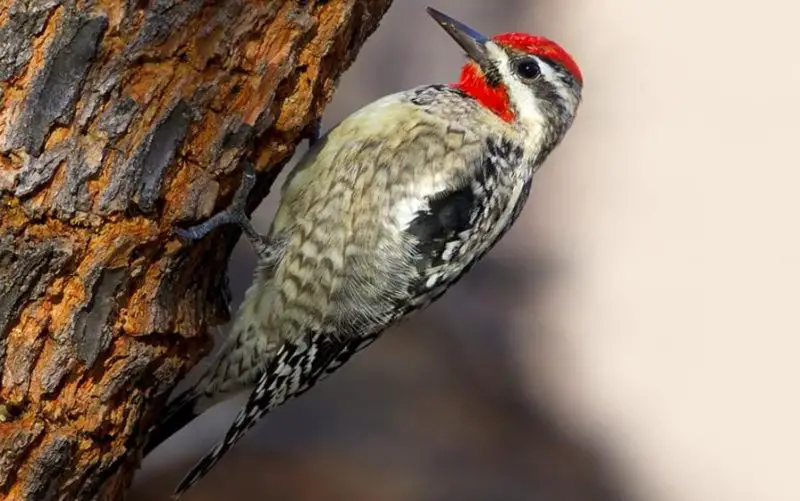
The Red-naped Sapsucker is a medium-sized woodpecker, measuring about 7.5 to 8.3 inches in length with a wingspan of 16 inches. It is easily identified by its striking head pattern: a red crown and nape, white face with a black stripe through the eye, and a small red throat patch that is more extensive in males than in females. Its back is black with white barring, while the underparts are lightly streaked with black. This bold plumage makes it one of the more distinctive sapsuckers in Montana.
This species is most often found in aspen groves, mixed conifer forests, and riparian habitats throughout Montana. They prefer areas with both live and decaying trees, since their feeding and nesting habits require softer bark for drilling. Red-naped Sapsuckers are also migratory, spending summers breeding in Montana’s mountains and moving southward in winter to warmer regions.
Their feeding strategy is unique compared to other woodpeckers. They drill rows of small holes, known as sap wells, into tree bark to feed on the flowing sap. These wells also attract insects, which the sapsucker consumes along with the sap. In addition, they eat berries, fruits, and occasionally ants or other small arthropods. Their feeding activity provides an unexpected benefit to other species such as hummingbirds, which also drink from the sap wells.
During the breeding season, pairs excavate nest cavities in aspen, cottonwood, or conifer trees. Females lay four to five white eggs, which both parents incubate for about 12 days. After hatching, chicks are fed a mixture of insects and sap. A fun fact is that Red-naped Sapsuckers are sometimes considered “keystone species” because the holes they drill provide food sources for a variety of other birds and animals.
Williamson’s Sapsucker
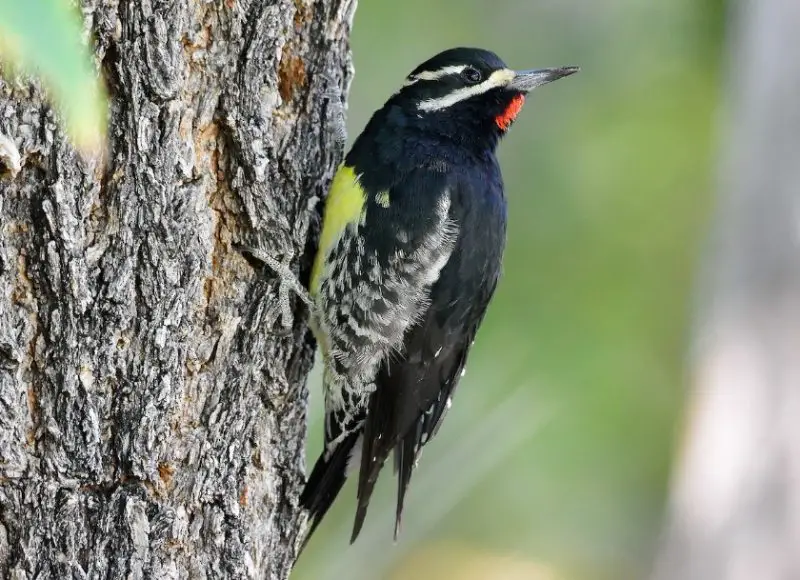
Williamson’s Sapsucker is one of the more striking and sexually dimorphic woodpeckers in Montana, meaning males and females look dramatically different. Males display glossy black plumage with a bright yellow belly, a bold white wing patch, and a red throat patch. Females, on the other hand, are brown with heavy black barring and a lighter belly, making them appear almost like a completely different species. Both measure about 8 to 11 inches in length with a wingspan of up to 17 inches.
This species prefers mature montane coniferous forests, particularly ponderosa pine, Douglas-fir, and mixed spruce-fir stands. In Montana, they are usually found in higher elevations, often nesting in dead or decaying trees within dense forests. They are less common in suburban or lowland habitats compared to other woodpeckers. Williamson’s Sapsuckers are migratory, breeding in Montana and moving southward to the southwestern U.S. and Mexico during winter.
Like other sapsuckers, their primary feeding method involves drilling sap wells into trees. However, they also consume a variety of insects, especially ants, which they capture either directly from the sap or by foraging on the ground. They also eat fruits and nuts, particularly in late summer. Their role in creating sap wells indirectly supports other wildlife, including small birds and mammals that feed on the same resources.
Breeding pairs excavate nest cavities in dead or decaying trees, often reusing the same sites year after year. Females lay four to six eggs, and both parents participate in incubation and feeding. A fascinating fact is that Williamson’s Sapsuckers are one of the few woodpeckers where males provide the majority of parental care, often spending more time feeding the chicks than females do.
American Three-toed Woodpecker

The American Three-toed Woodpecker is a small, specialized species that measures about 8.3 to 9.1 inches in length with a wingspan of 15 to 16 inches. Unlike most woodpeckers, it has only three toes instead of the usual four, a unique adaptation that helps it cling more tightly to tree trunks. Males are distinguished by a yellow crown patch, while females lack this feature. Both sexes have black-and-white barred backs and lightly streaked underparts.
This woodpecker is strongly associated with coniferous forests across Montana, particularly areas that have recently experienced fire or beetle outbreaks. They thrive in habitats with dying or dead trees, where insect populations are abundant. Because of their preference for disturbed forests, sightings often occur in burned woodlands or stands infested with bark beetles.
Their diet is dominated by wood-boring beetle larvae and other insects living under bark. Using their chisel-like bills, they flake away large pieces of bark to uncover prey, leaving behind distinctive rectangular patches on tree trunks. Unlike many woodpeckers, they rarely drum loudly, relying instead on tapping to forage. This quiet foraging makes them harder to detect in dense forests.
Nesting occurs in spring, with pairs excavating cavities in softwood trees. Females lay three to four eggs, which hatch after about two weeks. Both parents feed the chicks until they fledge at around 22 days. A fun fact is that American Three-toed Woodpeckers often move into recently burned areas within a year, making them one of the first species to benefit from forest fires.
Black-backed Woodpecker

The Black-backed Woodpecker is another species closely tied to burned and disturbed forests in Montana. Measuring 9 to 9.5 inches in length with a wingspan of 15 to 16.5 inches, this woodpecker is easily identified by its solid black back, which provides camouflage against charred trees. Males also have a small yellow crown patch, while females do not. Their underparts are white with fine streaking, giving them a clean and elegant appearance.
This species specializes in habitats where forest fires have recently occurred. In Montana, they are most often observed in coniferous forests that have been affected by wildfires, bark beetles, or other disturbances. Their reliance on burned landscapes makes them an important ecological indicator species for post-fire recovery.
Feeding primarily on wood-boring beetle larvae, Black-backed Woodpeckers use their powerful bills to peel away bark, exposing the tunnels of beetle larvae hidden beneath. They also consume ants, spiders, and other insects when available. Their foraging activity leaves behind distinctive patches of stripped bark, making their presence noticeable even when the birds themselves are not easily seen.
During the breeding season, pairs excavate nest cavities in fire-killed trees, where females lay three to four eggs. Both parents share incubation and feeding duties. A fun fact is that Black-backed Woodpeckers often move into burned forests in large numbers but may abandon these areas once insect populations decline, showing a close link between their survival and the natural fire cycle.
Red-headed Woodpecker
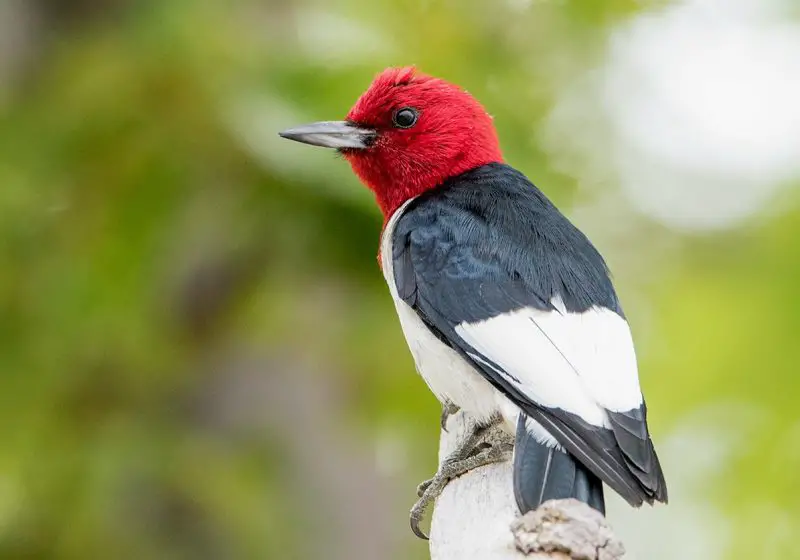
The Red-headed Woodpecker is one of the most striking and unmistakable woodpeckers in Montana, thanks to its bold coloration. Adults measure 7.5 to 9.1 inches in length with a wingspan of 16 inches. Their entirely red head contrasts sharply with a snow-white body and black wings that display large white patches. This vibrant appearance makes them stand out from other species, earning them the nickname “flying checkerboard.”
In Montana, Red-headed Woodpeckers prefer open woodlands, oak groves, river valleys, and savannas. They are also seen in farmlands and scattered tree stands. Unlike many woodpeckers that favor dense forests, this species is more common in open habitats with fewer but larger trees. Their populations fluctuate locally, and they are considered less common in the state compared to other species.
Their diet is highly varied and includes insects, fruits, nuts, and seeds. Red-headed Woodpeckers are one of the few woodpecker species known to catch insects in flight, much like a flycatcher. They are also famous for storing food, particularly acorns and beech nuts, in tree crevices, fence posts, or under bark, often covering them with pieces of wood to keep them hidden.
Breeding occurs in spring, when pairs excavate cavities in dead or decaying trees. Females typically lay four to seven eggs, and both parents share incubation and chick-rearing duties. A fun fact is that Red-headed Woodpeckers were once far more common, but their numbers have declined due to habitat loss. Despite this, they remain one of the most iconic and easily recognized woodpeckers in Montana.
Yellow-bellied Sapsucker
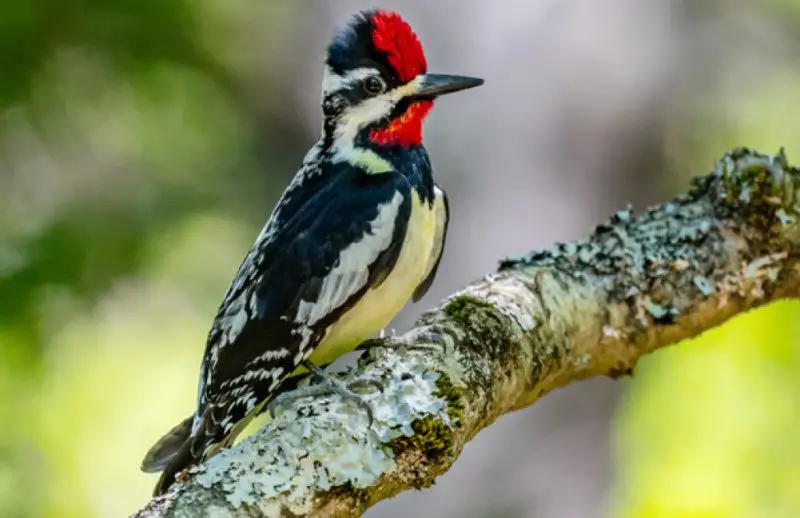
The Yellow-bellied Sapsucker is a medium-sized migratory woodpecker that measures 7.1 to 8.7 inches long with a wingspan of 13 to 16 inches. True to its name, it has a pale yellowish wash on its belly, though this feature can sometimes be faint. It also has a red crown and throat in males, while females only have the red crown. Bold black-and-white stripes across the face and wings make it an attractive and distinctive species.
In Montana, Yellow-bellied Sapsuckers are less common but can be found in mixed forests and riparian woodlands, especially during migration. They prefer deciduous trees such as birch, aspen, and maple, which are ideal for drilling their sap wells. Unlike some other sapsuckers, they are more migratory, wintering in the southeastern United States, Central America, and the Caribbean.
Their diet consists primarily of tree sap, which they obtain by drilling neat rows of small holes in bark. These wells not only provide sugary sap but also attract insects, which the sapsuckers consume as well. They supplement their diet with fruits and berries when available. Their method of sap feeding benefits many other species, including hummingbirds, which time their migrations to coincide with sapsucker activity.
Breeding pairs excavate nest cavities in decaying trees, where females lay four to six eggs. Both parents take turns incubating the eggs and feeding the young. A fun fact about Yellow-bellied Sapsuckers is that their distinctive rows of sap wells often persist for years, leaving a permanent mark on trees that tells the story of their feeding habits long after the birds have moved on.
FAQs About Woodpeckers in Montana
What types of woodpeckers live in Montana?
Montana is home to 11 species of woodpeckers, including Downy Woodpecker, Hairy Woodpecker, Northern Flicker, Pileated Woodpecker, Lewis’s Woodpecker, Red-naped Sapsucker, Williamson’s Sapsucker, American Three-toed Woodpecker, Black-backed Woodpecker, Red-headed Woodpecker, and Yellow-bellied Sapsucker. Each has unique characteristics, behaviors, and habitats across the state.
What is the largest woodpecker in Montana?
The Pileated Woodpecker is the largest woodpecker found in Montana. It can grow up to 19 inches long with a wingspan of nearly 30 inches. Known for its flaming red crest and loud drumming, this crow-sized bird prefers mature forests with large trees for nesting and foraging.
Which is the smallest woodpecker in Montana?
The Downy Woodpecker is the smallest species in Montana, measuring only about 6 inches long. Despite its small size, it has a strong drumming sound and is commonly seen in forests, parks, and even backyards, where it visits feeders for suet and seeds.
Are woodpeckers common in Montana?
Yes, woodpeckers are common in Montana and can be seen year-round. Species like Downy Woodpeckers and Hairy Woodpeckers are widespread and often visit backyard feeders, while others such as Black-backed and American Three-toed Woodpeckers are more specialized and prefer burned or beetle-infested forests.
What do woodpeckers in Montana eat?
Woodpeckers feed on a variety of foods depending on the species. Most eat insects such as ants, beetle larvae, and caterpillars found under bark. Others, like sapsuckers, feed on tree sap and fruit. Some species, including Lewis’s and Red-headed Woodpeckers, also catch insects in flight and store nuts or acorns for winter.
Do woodpeckers migrate from Montana?
Not all species migrate. Some, like the Northern Flicker and Lewis’s Woodpecker, migrate south during winter, while others such as the Downy, Hairy, and Pileated Woodpeckers remain in Montana year-round. Migratory patterns depend largely on food availability and seasonal climate changes.
Where is the best place to see woodpeckers in Montana?
Woodpeckers can be spotted in a variety of habitats across Montana. Mature forests, riparian woodlands, and burned areas are prime locations. Northern Flickers are often seen in open fields and suburban areas, while specialized species like Black-backed Woodpeckers are best found in recently burned forests.
Do woodpeckers damage trees in Montana?
While woodpeckers drill holes in trees, this activity usually targets insects living beneath the bark and is not harmful to healthy trees. Sapsuckers, however, may create rows of sap wells that can sometimes stress smaller or young trees, though this is generally not a major issue for forest ecosystems.
How do woodpeckers contribute to Montana’s ecosystem?
Woodpeckers play an important ecological role by controlling insect populations and creating nest cavities. These abandoned cavities later provide homes for many other species, including owls, chickadees, bluebirds, bats, and small mammals, making them essential to forest biodiversity.

